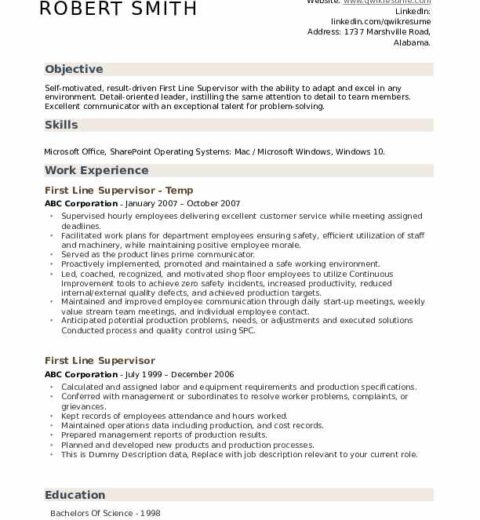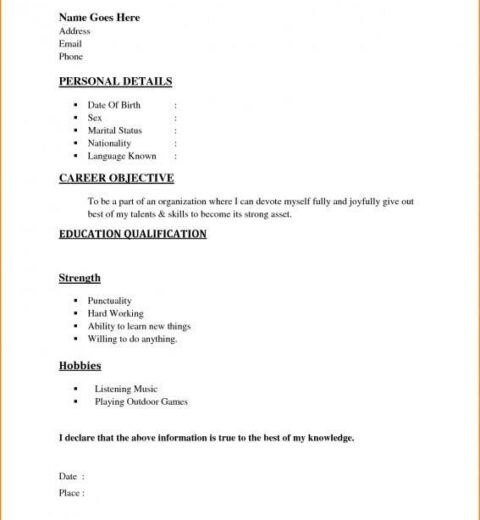In today’s competitive job market, a resume is not merely a documentation of one’s work history; it is a vital marketing tool that must be meticulously crafted to captivate the attention of hiring managers and recruiters. A well-designed resume can distinguish an applicant from the myriad of candidates vying for the same position. Here’s a comprehensive guide to creating a resume that not only gets noticed but articulately showcases your qualifications and experiences.
Understanding the Purpose of a Resume
The primary function of a resume is to serve as a self-promotional document. It encapsulates your professional identity, highlighting key skills, accomplishments, and educational background. The goal is to entice the reader to invite you for an interview, providing a glimpse of your potential value to the organization. Thus, understanding your target audience—primarily hiring managers—is fundamental. They seek candidates who can seamlessly integrate into their work environment and add immediate value.
Researching the Job Description
Before penning your resume, an exhaustive examination of the job description is advisable. Identify the requisite skills and qualifications listed by the employer. Highlight specific keywords and phrases that are pivotal to the role. Incorporating these terms judiciously in your resume will assist in passing through Applicant Tracking Systems (ATS), which many firms use to filter applicants based on keyword relevance.
Choosing the Right Format
There are three prevalent resume formats: chronological, functional, and hybrid. The chronological format emphasizes work history, making it ideal for candidates with a strong employment background. The functional format, on the other hand, focuses on skills and is suitable for those with gaps in their employment or a diverse job history. The hybrid format combines both approaches, offering a comprehensive view of skills complemented by relevant experiences.
Crafting a Compelling Summary or Objective
Your resume should commence with a captivating summary or objective statement that succinctly conveys your career aspirations and what you bring to the table. An objective statement is particularly effective for entry-level candidates or those transitioning careers, as it outlines your goals and how they align with the prospective employer’s needs. Conversely, a summary statement encapsulates your extensive experience and achievements, appealing to seasoned professionals. Aim for clarity, brevity, and impact, ensuring that this section compels the reader to continue.
Highlighting Relevant Skills
The skills section of your resume should be tailored to reflect both hard and soft skills relevant to the position. Hard skills may include technical proficiencies such as software knowledge, while soft skills encompass interpersonal attributes like communication and teamwork. Ensure that you substantiate these skills with concrete examples from your previous positions. Showcasing quantifiable achievements, such as “increased sales by 30% in six months,” provides undeniable evidence of your capabilities.
Detailing Work Experience
Your work experience is arguably the most crucial element of your resume. List your previous employment in reverse chronological order, including the company name, your job title, and the dates of employment. Under each entry, utilize bullet points for clarity, focusing on your accomplishments rather than merely listing duties. This aspect is where you can draw a direct line between your experiences and the needs of the employer. Use active language, incorporating strong verbs such as “achieved,” “designed,” or “initiated” to convey impact and dynamism.
Education and Certifications
The education section should include your highest degree, institution attended, and graduation year. For those with extensive work experience, this section can be placed towards the end. However, for recent graduates or those pursuing specific qualifications, it is advisable to place it earlier. Any relevant certifications or licenses should also be highlighted here, as they can substantially bolster your candidacy. Employers greatly appreciate candidates who demonstrate a commitment to lifelong learning and professional development.
Incorporating Additional Sections
To further enrich your resume, consider including additional sections such as volunteer work, relevant projects, or professional memberships. These elements can provide a more holistic view of who you are as a candidate, exemplifying your dedication and breadth of experience. Such inclusions can set you apart from candidates who present a more conventional resume. Ensure that everything you include is pertinent to the job for which you are applying.
Ensuring Clarity and Professionalism
Presentation matters significantly. Use a clean, professional layout with ample white space, making it easy for recruiters to digest the information. Employ a font size of 10-12 points, using bold for headings and section titles to enhance readability. Limit your resume to one page if you have less than ten years of experience; two pages may be justified for more extensive careers. Ensure that there are no typographical or grammatical errors, as these can tarnish your credibility.
Customizing for Each Application
One size does not fit all when it comes to resumes. Always tailor your resume for each job application, ensuring that the content is relevant and aligned with the employer’s expectations. Highlight experiences and skills that are most pertinent, and modify your summary or objective statement accordingly. This level of customization demonstrates your genuine interest in the position and willingness to engage with the company’s specific needs.
Conclusion
In summary, crafting a resume that captures attention is an exercise in strategy and precision. It demands thorough research, meticulous formatting, and a tailored approach that showcases your unique strengths and relevance to the employer’s requirements. By adhering to these guidelines, you can create a compelling document that not only resonates with hiring managers but also enhances your prospects in securing that much-coveted interview.




